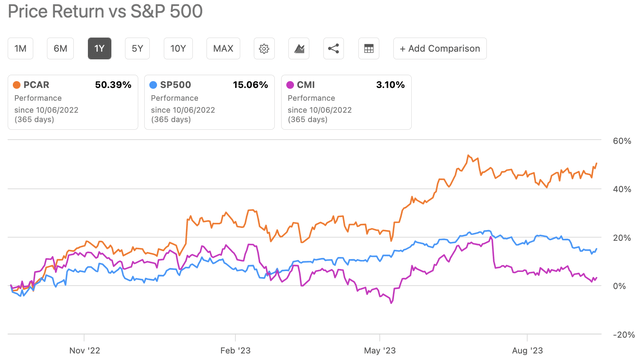If there was any year in which companies could get a pass for booking a loss or for poor sales, 2020 would be it. There are very few companies that have gone unscathed by the economic turmoil unleashed by the COVID-19 pandemic. McCormick (MKC) has not only gone unscathed but is thriving in the midst of this crisis.
Exhibit: McCormick - The Global Leader in Spices
Exhibit: McCormick YTD Stock Chart Shows The Company Is Thriving
(Source: Google Finance)
The company saw sales increase dramatically for the quarter ending May 31, 2020. It registered sales of $1.4 billion in this quarter compared to $1.3 billion in 2019. Its consumer business saw robust growth while its restaurant business suffered. The consumer business saw a net sales increase of 26% while its Flavor Solutions division, that serves its commercial customers, saw a revenue decline of 18%.
Exhibit: McCormick's Q2, 2020 Sales Results
The Americas region performed exceedingly well with a 35.8% growth in net sales for its consumer business. The EMEA region had good performance too with a 22% increase in sales for its consumer business. But the Asia region saw a decline in sales of -17.9% in its consumer business.
The company also expanded both its gross margins and operating margins by 230 bps and 240 bps respectively. This may be a sign that the company has good pricing power in the market and does not have to resort to discounting to move its products.
The company could be gaining competitive strengths from its powerful brand name. Especially in the U.S., McCormick brand is associated with spices and flavorings. That is translating to strong growth especially during this pandemic when people are avoiding restaurants and cooking more at home. Its wide array of spices and flavoring may be adding to its domination. Its wide product offerings helps the company to garner vast square footage in the spice aisle in supermarkets and grocery stores.
Spices are usually packaged in small sizes for the consumer market, this could be a competitive advantage in itself. When the consumer sees these small packages they know they will get a lot of use and value out of it. The small bottles of McCormick last a very long time. This could be allowing the company to put a premium price on their product without seeing a consumer revolt. It would be interesting to see how store branded spices capture market share from McCormick. But for now McCormick still rules the spice market.
Currently, the company's stock has had a huge run. It's trading at near all-time highs with an earnings multiple of over 30. This volatile stock market may present better and cheaper entry points for this stock.
Disclosure: At the time of this publication, I do not own McCormick.









